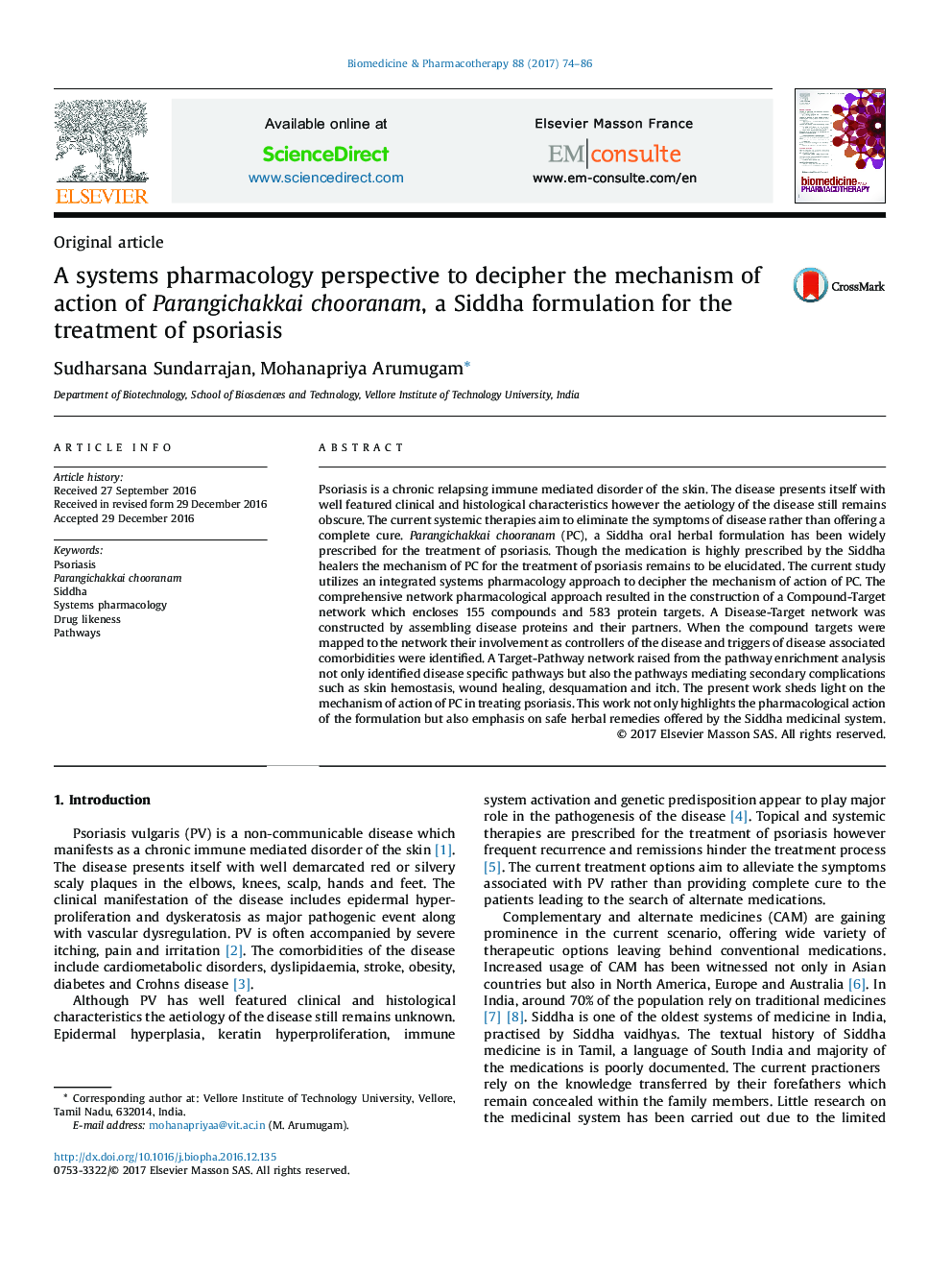| Article ID | Journal | Published Year | Pages | File Type |
|---|---|---|---|---|
| 5553127 | Biomedicine & Pharmacotherapy | 2017 | 13 Pages |
Psoriasis is a chronic relapsing immune mediated disorder of the skin. The disease presents itself with well featured clinical and histological characteristics however the aetiology of the disease still remains obscure. The current systemic therapies aim to eliminate the symptoms of disease rather than offering a complete cure. Parangichakkai chooranam (PC), a Siddha oral herbal formulation has been widely prescribed for the treatment of psoriasis. Though the medication is highly prescribed by the Siddha healers the mechanism of PC for the treatment of psoriasis remains to be elucidated. The current study utilizes an integrated systems pharmacology approach to decipher the mechanism of action of PC. The comprehensive network pharmacological approach resulted in the construction of a Compound-Target network which encloses 155 compounds and 583 protein targets. A Disease-Target network was constructed by assembling disease proteins and their partners. When the compound targets were mapped to the network their involvement as controllers of the disease and triggers of disease associated comorbidities were identified. A Target-Pathway network raised from the pathway enrichment analysis not only identified disease specific pathways but also the pathways mediating secondary complications such as skin hemostasis, wound healing, desquamation and itch. The present work sheds light on the mechanism of action of PC in treating psoriasis. This work not only highlights the pharmacological action of the formulation but also emphasis on safe herbal remedies offered by the Siddha medicinal system.
